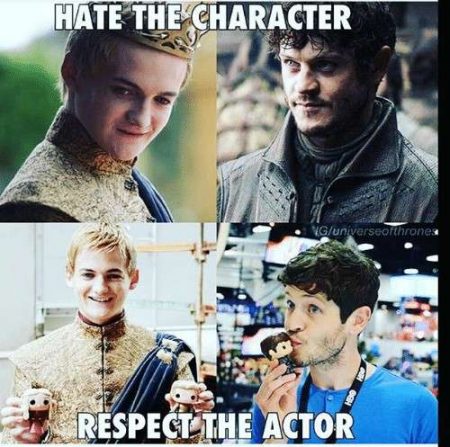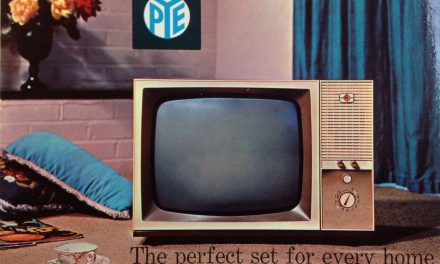In her most recent blog, Elke Weissmann pointed out a peculiar characteristic of her own television viewing experiences – one that is presumably shared by a wide range of audiences. Namely, that she had somewhat lost interest in BBC’s high-end quality dramas for their lack of credibility and ‘relatability’. These dramas circulate the middle-class experience, complete with the hipster-aesthetics of the opening credits and stylish interiors emitting a sense of easiness, and characters who might have existential struggles but who are at the same time distanced from the lived experiences of the very audience to whom they’re offered for consumption. Borrowing Christine Geraghty’s words, Elke writes that these characters are ‘so driven and so isolated they represent the views of the 1%’. As a consequence, these dramas might still display the complexity and high-end aesthetics that make television (look and feel) serious, commensurate to film, and render it a dominant story-telling medium, but the question remains – especially from the point of view of audiences’ response, do they mobilize their audiences in terms of engagement (and I’d add involvement) the way other programs do? It is of course a truism to say that the question of preference, and consequently, choice, is a pivotal element of the study of both audience and industry. We are all aware of the fact that certain program texts (specific formats, types of narrative, and specific character arcs) are more likable, easier to identify with, and more relatable than others.
I will attempt to think further Elke’s argument and open it up to the question of agency by asking what television wants. If we are to anchor discussions of choice and preferences in the question of authenticity and, consequently, relatability, with respect to television’s ability to mediate social reality and the lived experiences of broader (other-than-upper-middle-class) demographics, we should perhaps look at the correlation between affect and participatory agency.
In the following I’ll offer three examples of practice for format and content types that in my view are particularly conducive to, and alsodependent on, generating a high level of involvement (both in terms of emotions and action) on the part of their respective audiences. These are medical and veterinary/animal rescue reality programs like Boston Med (Paul O’Grady: For the Love of Dogs (ITV, 2012-) or The Supervet (Channel 4, 2014-), lifestyle programs like HGTV’s House Hunters International (2006-), and finally, from the realm of televisual paraphernalia, the popular ‘Hate the Character-Respect the Actor’ memes.
Why Affect?
Discussions of the various ways in which viewers respond to and engage with televisual content have long been central to both production and audience studies (see for instance Carpentier 2011, Jenkins 2013, Falero 2016). Also, anthropological and sociological approaches to audiences’ consumption practices, including preferences for format and content types as well as viewers’ levels of participation in the production and consumption of televisual paraphernalia, have resulted in a substantial body of literature that shapes our understanding of television’srelation to social media, to fandom, and to forms of (political) and or social activism (Falero 125, Barker 2017). In close connection to these, questions of authenticity and accuracy have also been pivotal aspects to consider – whether it came to positing television as an (in)accurate indicator of social reality in a post-truth era, or conceptualizing both quality (McCabe and Akass, 2007) and complexity (Mittell 2015) in relation to TV drama. These approaches habitually consider the success and popularity of particular formats and types of content when commenting on viewers’ participatory practices. It is important, howeverto remind once again of the role affect may play in the understanding of participatory agency (cf. Grusin 6-7).
When I think of the quality of relatability and how theories of affect might inform our understanding why we respond so strongly to certain narratives, characters, especially when it comes to representations (or more like mediations) of pain and suffering, I draw on among other things ideas that Kelly Jean Butler put forward.She suggests that in public culture first person life narratives have become central to the understanding of selfhood (Butler 195), and public discourse has become dominated by intimate stories of suffering and pain (Berlant, 1999). In a similar tone, John Ellis (2001) sees television as conducive to the emergence of the mode of testimony by way of its ability to sustain both proximity and distance between the viewer and the subject.
Medical reality as well as animal rescue programs are one example of the testimony and of relatable narrative arcs and characters. They achieve this by means of the radical, visceral involvement of the viewer into the narrative. As I wrote earlier, ‘medical reality programmes like Hopkins (ABC, 2008), Boston Med (ABC, 2010), offer representations that accommodate viewers’ presumptions and expectations about disease and therapy. These programs achieve cinematic affect by relying on specific formulas: they showcase the talent, skill, determination and professionalism of their doctors by presenting complicated cases and procedures, and they follow the ‘compositional logic of fast paced narrative, filmed usually with a hand-held camera reminiscent of the cinémavérité style, or the appearance of real-life doctors and patients on the screen make it easier for the viewer to attribute more realism to these shows, and to identify more easily with the characters on the screen’ (Palatinus). In a way, we can say that medical reality shows quite literally turn their viewers into patients by drawing them, by means of affective practices, into the narrative reality of the program where their position will be defined by the medical apparatus. On the other hand, these showsaddress not only the anxieties and hopes of potential patients, but also the shared experiences of carers and relatives. Suffering and pain, the experience of being exposed, feeling helpless and having to place one’s trust into the hands of a stranger render the characters and the story lines relatable and easy to identify with.It is the affective agency of the format and of the genre that draws viewers to these program texts week to week, and they participate in the drama of health and disease, of suffering and recovery by following the storylines of the characters they see.
Animal rescue or veterinary shows (like Paul O’Grady: For the Love of Dogs, or The Supervet) represent a format/genre that is corollary to medical reality programs as well as an extension of those, both drawing on human-non-human politics and catering to the interests of pet owners who, ostensibly, constitute a considerable body of global audience (which of course enhances the global marketability of both the program and of the host channel). In the cases presented in these programs, responses to the suffering of animals, and what might be referred to as the ‘cuteness factor’, are pivotal components of the shows’ syntax. These programs revolve around the fate of stray, injured and sick animals, animals in psychologicaldistress, and the heroic attempts of altruistic humans coming to their rescue. These narratives tie in closely with the symbolization specific anthropocentric drives that underlie critical approaches to the human-nonhuman relation, and can effectively bring animal (non-human) suffering close to viewers because they establish frameworks of inter-subjectivity by appealing to the ‘life stories’ of the animals in question and by presenting them in relationships to their humans (family, carers, doctors). As Derrida writes in The Animal That Therefore I Am, the question of suffering (and with it, we might add, the affective quality of witnessing animals in media) becomes apparent when we recognize that ‘the animal’ does not denote a generic (and therefore faceless, objectifiable) concept. Rather it is always-already an individual creature.
Consequently, the questions of affect and participatory agency are particularly marked here, as the programs deliberately and purposefully problematize the concept of the boundary between the species. Pets are habitually described as family members, and the medical apparatus involved in their treatment (from equipment to institutions to protocols to the structure of care-giving and therapy) is also on par with what we see in human medicine.And we shouldn’t forget of course, that just like the narratives of medical reality programs, these stories are primarily narratives of redemption. The questions whether these programs show humans in the position of the redeemer is difficult to assess. It would be easy to critique them as reinscriptions of Patriarchal power structures,or tocondemn them for lacking a true emancipatory dimension in their narratives. But, from the aspect of participatory agency and activism, it has to be acknowledges that the popularity of the shows resulted in a general increase in adoptions in the UK over the past decade. Also, as evidenced by Paul O’Grady’s six month voluntary work at the Battersea Dogs and Cats Home (instead of the original six days allocated to filming)the animals in a way always ‘steal the show’, which shifts the focus on the agency attributed to the animal, to the positing of the animal as ‘actor’, or, to paraphrase Glen A. Mazis, animals as storytellers (251). This latter positioning becomes especially relevant when one looks at the paratextual feedback on the shows or the emerging culture of animal celebrities (invented or actual) on social media.
Of course, certain formats can offer a very informative counter-example to the question of relatability. I think it’s not just ‘driven and isolated high-end quality drama’ than can get detached and unrooted from the social reality of relatable phenomena. HGTV’s House Hunters International (2006-) would perhaps cater more to the escapist drives of specific audiences.What complicates the situation here is the disproportionate focus on high-end property types in exotic locations, and a clientele that also embodiesthe kind of upper-class complacency that is unattainable precisely to those viewers such programs are most typically consumed by. It is however the nostalgia for the unattainable, the illusion of the ability to escape one’s reality, or the affective desire of being exposed to the (mediation of the) exotic that brings viewers to this show – rather than the relatable character of its contents. In terms of visual syntax, House Hunters International follows the same paradigm quality dramas would, with its emphasis on stylized cityscapes and appeasing interiors. But the characters purchasing the properties are a lot less inviting than characters in medical realities or animal rescue/veterinary shows. House Hunters International primarily appeals to the idea of a globalized world where mobility is an achievable standard and where cultural exchange is always empowering.
The third example I wanted to briefly mention moves beyond the television text into the realm of televisual paratexts and paraphernalia. Social media has been flooded with variations of the ‘Hate the Character-Respect the Actor’ meme. A quick (non-authoritative) google search reveals that television fandom habitually reproduces and circulates the ‘Hate the Character-Respect the Actor’ meme which is meant both as critical commentary on fans’ inability to divorce actor from character, and also an indication of the power of affective storytelling – and, in close connection to it, acting – that prompts excessive, sometimes visceral responses from audiences. Presumably deriving from the Game of Thrones(HBO, 2011-) fandom of course, they usually target Cersei (Lena Heady), Joffery (Jack Gleeson), Ramsay Bolton (Iwan Rheon) and Littlefinger (Aidan Gillen). Memes are a particular cultural form because by way of their embeddedness in fandom and the criticism of it, they call attention to the power of response, and to the ways television series such as Game of Thrones can mobilize affective and participatory agencies (on the part of the program text and on the part of viewers) that produce strong emotional responses, and result in the production of further content. On the other hand, memes are a typical manifestation of what Lev Manovich calls the modularity (components can be altered and shuffled around) and variability (‘not something fixed once and for all, but something that can exist in different, potentially infinite versions’) of new media objects, and as such are the quintessence of participatory play.
The ‘Hate the Character-Respect the Actor’ meme indicates precisely the proximity not only of actor and character, but also that of character and viewer. As I wrote in an earlier blog, it is powered by the ‘drive that makes it impossible to ‘unsee’ Hermione Granger in Emma Watson, Hannibal Lecter in Sir Anthony Hopkins’. It also directs attention to a paradoxical quality of acting, namely that the more the audience hate the character, the more successful the performance of the actor is. The audience’s engagement via the production and consumption of memes thus extends both affect andparticipatory agency to paraphernalia. This meme therefore underlines the specificity of participatory culture, and the ability of media (television in particular) to shape the perception of subjectivity.
Conclusion (?)
To summarize, the examples above suggest the following: the affect (from the point of view of participation) draws on two inputs: that of sympathy (the ability to relate), and that of con-passion (the ability to suffer with). Television enables the viewer to become a witness – by merging the two aspects of the affect into a single trajectory that then manifests on the levels of (an over-arching) narrative in the episode, the season, and finally, the format and (the hosting) channel, in a process of institutionalization. The viewer’s position as witness, in return, is no longer a function of their intellectual curiosity but a form of participation. And this participation is not possible without the agency that, in a recursive loop, feeds the program and its paratexts. It’s the same agency that becomes manifest in the viewer’s control (quite literally, with the remote, and via opting for thematic channels or individually selected programs) to follow or abandon specific contents.
Of course, considering television as a participatory medium is not without a problem. Television is not participatory the same way social media are – where the merger/synergy of production and consumption of content is more marked. What perhaps would help us understand television’s participatory agency in this sense would be to understand this participation via acts of relating: audiences are able to relate because they’re ‘enabled’ to do so. The medium’s specific modality enables a form of spectatorship that is predicated on ‘identification and empathetic attachment’ (Butler 2012, 195).
In this respect the agency I was referring to is perhaps not so much, or not exclusively the agency relegated to the audience but more particularly to television itself – the ability to channel / mediate the ability to relate.
The reason why I suggest a return to a more psychologically driven understanding of television’s participatory culture is because if we are to understand the correlation between audiences’ response and participation and the agency attributed to television, affect theories provide a useful tool to investigate what television ‘does’ to audiences regarding their ability to relate and empathize (especially with narratives of pain and suffering). They also remind us that we have to negotiate television as that which is more about mediation rather than representation, more about what media do rather than what they mean (Thrift 2007, quoted in Grusin, 2010.).
The question of affective agency in relation to audience participation, in other words, what television does and what it makes audiences do in terms of not just action but also experiences and emotions, still proves to be a relevant one as it opens up new perspectives to understanding why we attribute so much power to television’s representational practices – especially with regard to specific formats and content types. Perhaps if we expand the notion of television beyond the apparatus, beyond its technological, economic, and political dimensions, to include the anthropological, and think of it in ecological terms (like McLuhan suggested we did about media ecology), we realize that the function of the format and the medium also have a lot to do with fundamentally anthropomorphic drives: the one to relate – and be related to, and in close connection to this, the one of story-telling. As we will have known, humans are social (that is, relating) animals, sentient beings that perform and experience their social existence by acts of relating. But, in close connection to this, and mobilizing the somewhat forgotten Lacanian takes on the psychology of response, human communication is also deeply rooted in the symbolic order: humans are also story-telling animals, and in our present historic time television (the many forms, practices and technologies of it) functions as an efficient conduit for those drives. Without of course reducing TV to mere instrumentality, positing it like an extension,a supplement, or more precisely, the environment of continued human/cultural discourse,something that channels the agency of viewers, may help better understand the dynamics of participatory agency.
Works cited:
Berlant, L. “The subject of true feeling: Pain, privacy, and politics”. Cultural Pluralism, Identity Politics, and the Law. A. Sarat and T.R. Kearns (eds), University of Michigan Press, 1999, 49–84.
Butler, Kelly Jean: “The Beginning of Community”: Witnessing Ourselves in Australian Story”. Darian-Smith, Kate and Sue Turnbull (eds.) Remembering Television. Histories, Technologies, Memories. Cambridge Scholars Publishing, 2012, 192-209.
Carpentier Nico. Media and Participation: A Site of Ideological-democratic Struggle. Intellect, 2011.
Derrida, J. The Animal that Therefore I Am. (trans. David Wills). Fordham UP, 2008.
Ellis, J. Seeing Things: Television in the Age of Uncertainty. I.B. Tauris, 2000.
Falero, Sandra M. Digital Participatory Culture and the TV Audience: Everyone’s a Critic. Palgrave, 2016.
Grusin, Richard. Premediation. Affect and Mediality after 9/11. Palgrave, 2010.
Jenkins, Henry. Spreadable Media: Creating Value and Meaning in a Networked Culture. NYU Press, 2013.
Manovich, L. The Language of New Media. MIT Press, 2001.
Mazis, Glen A. Humans, Animals Machines. Bluring Boundaries. State University of New York Press, 2008.
McCabe, J and Kim Akass. Quality TV: Contemporary American Television and Beyond. I.B. Tauris, 2007.
McLuhan, M. Understanding Media. The Extensions of Man. MIT Press [1964] 1995.
Mittell, Jason. Complex TV: The Poetics of Contemporary Television Storytelling. NYU Press, 2015.
David Levente Palatinus is Lecturer in Media and Cultural Studies at the University of Ruzomberok. His research moves between and across visual studies, digital media, and cultural theory. He has worked and written on violence in serial culture, medicine and autopsy, autoimmunity and war, and digital subjectivity in the Anthropocene. He is co-editor of the ECREA section of Critical Studies in Television, and sits on the editorial board of Americana E-Journal of American Studies (Hungary) and Rewind: British and American Studies Series of Aras Edizioni (Fano, Italy). He is co-editor of the volume Crime and Detection in the Age of Electronic Reproduction (forthcoming, Americana Ebooks, 2017), and is currently completing a book called Spectres of Medicine: The Ethos of Contemporary Medical Dramas (forthcoming, Aras Edizioni).







